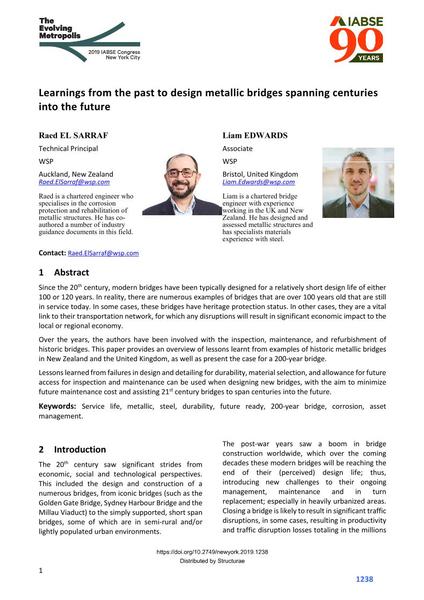Learnings from the past to design metallic bridges spanning centuries into the future

|
|
|||||||||||
Détails bibliographiques
| Auteur(s): |
Raed El Sarraf
(WSP)
Liam Edwards (WSP) |
||||
|---|---|---|---|---|---|
| Médium: | papier de conférence | ||||
| Langue(s): | anglais | ||||
| Conférence: | IABSE Congress: The Evolving Metropolis, New York, NY, USA, 4-6 September 2019 | ||||
| Publié dans: | The Evolving Metropolis | ||||
|
|||||
| Page(s): | 1238-1243 | ||||
| Nombre total de pages (du PDF): | 6 | ||||
| DOI: | 10.2749/newyork.2019.1238 | ||||
| Abstrait: |
Since the 20thcentury, modern bridges have been typically designed for a relatively short design life of either 100 or 120 years. In reality, there are numerous examples of bridges that are over 100 years old that are still in service today. In some cases, these bridges have heritage protection status. In other cases, they are a vital link to their transportation network, for which any disruptions will result in significant economic impact to the local or regional economy. Over the years, the authors have been involved with the inspection, maintenance, and refurbishment of historic bridges. This paper provides an overview of lessons learnt from examples of historic metallic bridges in New Zealand and the United Kingdom, as well as present the case for a 200-year bridge. Lessons learned from failures in design and detailing for durability, material selection, and allowance for future access for inspection and maintenance can be used when designing new bridges, with the aim to minimize future maintenance cost and assisting 21stcentury bridges to span centuries into the future. |
||||
| Mots-clé: |
acier
|
||||
